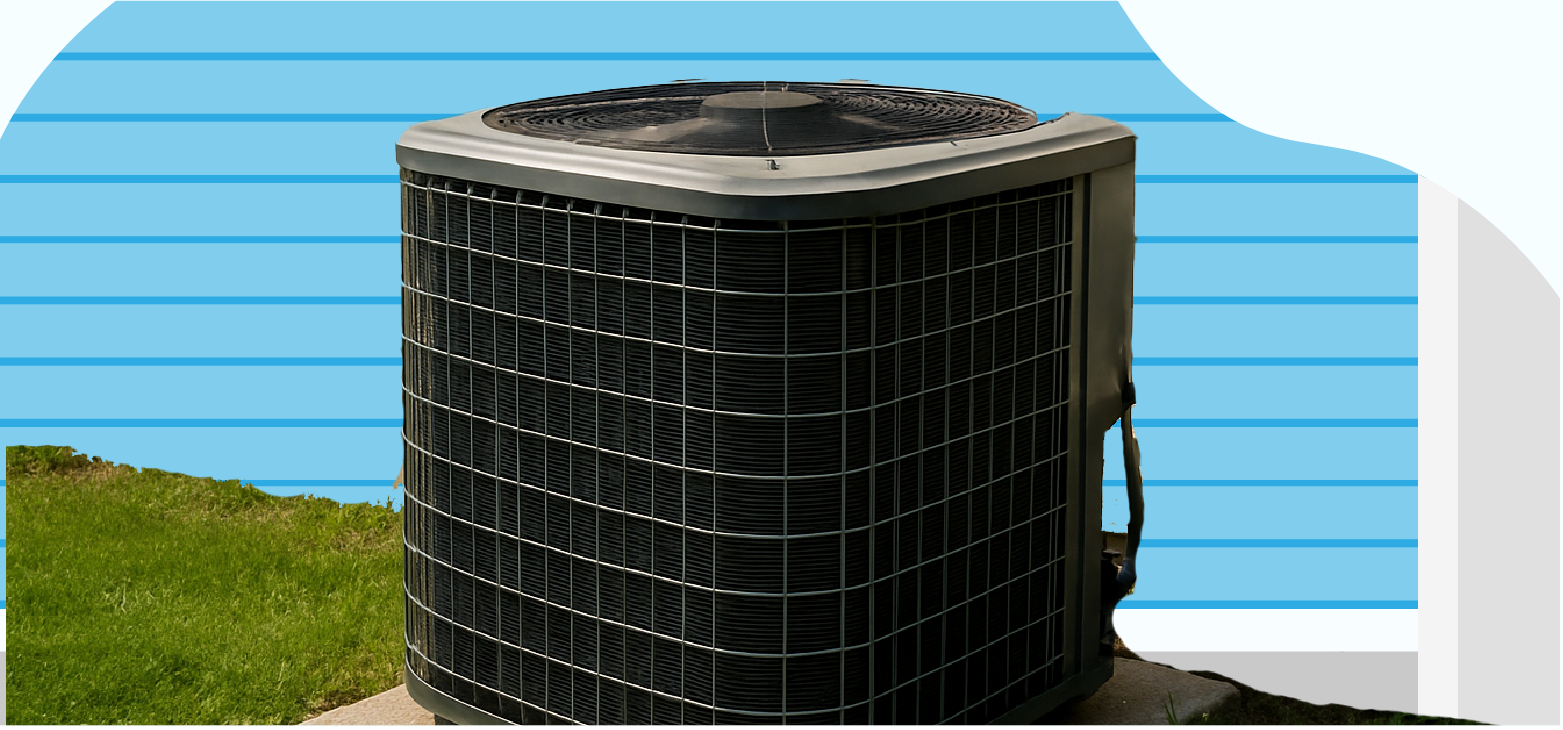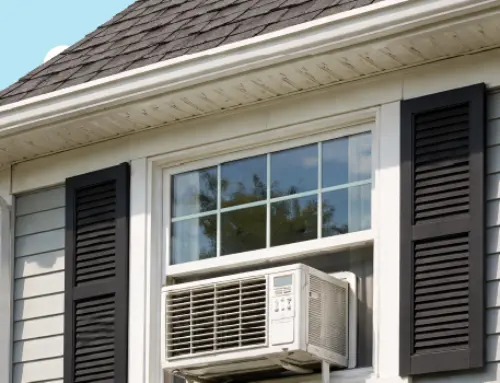What is Energy Efficiency Ratio (EER) and How Save on Your Bill
by Tyler Castle
16.6 min read

The energy efficiency ratio, or EER, is a simple metric that can help you understand how much energy your appliances are using, and importantly, how much money you could be saving each month.
Whether you're upgrading your air conditioner or simply want to make smarter home choices, knowing how EER works puts the power back in your hands. Wondering how to use it for yourself? With 35 years of experience in the electricity industry, we've seen it all.
We'll shed light on what EER really means, why it matters for Midwest homes, and how you can use it with the right energy plan, to start cutting down your electric bill today.
Key Points of This Article:
- EER measures how efficiently cooling systems convert electricity into cooling power, similar to MPG for cars.
- A good EER rating starts around 11.7 for heat pumps and 12 for air conditioners, with higher numbers indicating better efficiency.
- Higher EER systems provide lower electricity bills, better extreme heat performance, and increased home value.
- EER only applies to cooling; heating efficiency requires different metrics like HSPF or AFUE
What is the Energy Efficiency Ratio (EER)?
The Energy Efficiency Ratio (EER) tells you how efficiently a cooling system (like an air conditioner) uses electricity to keep your space comfortable. The higher the EER, the more efficient your system is.
Think of your energy efficient ratio like your car's miles per gallon (MPG): the higher the number, the more efficiently it runs. Just like a car with better MPG saves you money on gas, a higher EER means your air conditioner uses less energy to cool your space, keeping more money in your pocket.
We've come to find that the higher the energy efficient ratio, the less electricity your system uses to produce the same amount of cooling, which can lead to savings on your electricity bill.
Unlike SEER (Seasonal Energy Efficiency Ratio), which looks at performance over an entire season, your energy efficient ratio is measured at a single high-temperature point, usually around 95°F. This is especially helpful to know as it gives you a clear picture of how your unit performs during the hottest days of the year.
What Is a Good Energy Efficiency Ratio?
What is considered a "good" energy efficient ratio for your cooling system? The short answer is it depends on the type of air conditioning unit and the space where it's installed. But if you're looking for an exact number, we've got you.
According to industry standards and insights from Carrier, a good energy efficient ratio rating starts at around 11.7 for heat pumps and 12 for air conditioners but it's not just about picking the highest number. A good energy efficient ratio is one that balances energy savings, cost, and performance for your specific space.
The type of air conditioning unit, whether it's a window unit, central system, or ductless mini-split, can significantly affect your energy efficient ratio because different systems are designed for different applications and efficiency levels.
For example, ductless systems often have higher EER ratings due to reduced energy loss through ductwork. Meanwhile, larger central systems may offer better performance in whole-home cooling but may not be the most efficient choice for smaller spaces or rooms that don't need constant cooling.
Where the unit is installed also plays a big role. An air conditioner placed in direct sunlight or in a poorly ventilated area may need to work harder to cool, which reduces its real-world efficiency, even if the EER rating out of the box is high.
Paying attention to your EER is especially important if you live in a region with hot, dry summers, since it measures how efficiently your system performs under high outdoor temperatures. A higher EER rating means the unit is proven to maintain efficiency even under intense heat, which translates to lower energy bills and more consistent comfort.
How to Calculate an Energy Efficient Ratio
If you're in the market for a new air conditioner, knowing the calculation for an energy efficient ratio can help make your purchasing decision easier and smarter.
The formula for calculating your cooling systems energy efficient ratio is simple:
EER = Cooling Output ÷ Electricity Used
The cooling output is measured in BTUs per hour (British Thermal Units) and this tells you how much heat the system can remove from your home in one hour.
Your "Electricity Used" is measured in watts, which is how much power it takes to do the job. Here's a real-life example to help you calculate your EER:
Most residential central air conditioning units are designed to cool an entire home, so they typically have a cooling capacity of 20,000 and 58,000 BTUs. For this example, if a unit uses 5,000 watts of electricity per hour.
To calculate the energy efficient ratio of 20,000 BTU unit using 5,000 watts for electricity per hour, simply divide 20,000 by 5,000 to which you would get an energy efficiency ratio of 4.0:
At 20,000 BTUs: EER = 20,000 ÷ 5,000 = 4.0
The key note about this calculation is that as the cooling output (BTUs) increases and if your electricity usage stays the same, the EER improves, meaning you're getting more cooling power for the same amount of energy.
What Happens to Your Energy Efficient Ratio if Your Electricity Usage Fluctuates?
In the real world, we know electricity usage can fluctuate based on outside temperature, system size, age, maintenance, and how hard the unit has to work. And that fluctuation in your energy use can affect the energy efficient ratio of your cooling system.
If your electricity usage goes up, your energy efficient ratio will decrease, because the system is using more energy to produce the same cooling output. This often happens with:
- Dirty air filters
- Poor insulation
- An aging or oversized system
- High outdoor temperatures that force the unit to work harder
If your electricity usage goes down, your energy efficient ratio will increase, because the system is using less energy for the same cooling. This can happen when:
- The unit is newer and energy-efficient
- You've performed regular maintenance
- Your home is well-insulated and shaded
- Outdoor temperatures are moderate
In the end, your systems energy efficient ratio is a snapshot of efficiency at a specific point in time assuming steady energy use. But in reality, efficiency can vary. We've found that keeping your system well-maintained and right-sized for your home helps ensure you're getting the best possible performance year-round.
Does an Energy Efficient Ratio Matter in the Winter?
The short answer is no, EER doesn't matter in the winter. EER isn't the metric you'll want to track as you measure the efficiency of your appliance, especially if you use gas for the majority of your heating needs (hey, Midwest; we're looking at you)!
EER is designed to measure cooling efficiency at high outdoor temperatures; so, it's most relevant during the summer months when your system is working hard to keep you cool.
But when winter hits, and temperatures drop, a different efficiency rating becomes more important.
For heating, you'll want to look at:
- HSPF (Heating Seasonal Performance Factor): If you use a heat pump, this rating shows how efficiently it heats your home over the entire heating season.
- AFUE (Annual Fuel Utilization Efficiency): If you have a gas or oil furnace, this tells you how much of the fuel is actually converted into heat for your home.
If your system includes a heat pump that runs year-round, it's a good idea to pay attention to both EER and HSPF.
Does Energy Efficiency Affect Property Values?
Yes, making your home more energy-efficient can definitely boost its value. In fact, homes that use less energy often sell for more money and sometimes even sell faster than less efficient ones. That's because buyers today care more about saving on monthly bills and making eco-friendly choices.
Here's how energy efficiency can positively impact your property's value:
- Lower utility bills: When a home is well-insulated and energy-efficient, it takes less power to heat, cool, and run appliances. That means lower monthly bills, which is a big selling point for future buyers.
- More buyer appeal: A lot of people are now looking for homes that are not just affordable to live in but also good for the planet. An energy-efficient home checks both boxes.
- Higher sale price: Research shows that energy-efficient homes often sell for more—somewhere between 2% and 8% more, depending on the upgrades and market.
- Faster selling time: Because they stand out from the competition, these homes tend to get noticed—and sold—more quickly.
Better rental potential: If you're renting out your property, energy-efficient features can make it more attractive to tenants who care about sustainability—and may even allow you to charge higher rent.
What Are the Benefits of a Strong Energy Efficient Ratio?
Understanding a system's energy efficient ratio can help you make smarter decisions when it comes to cooling your home and managing your energy costs. While it may seem like just another technical rating, EER directly impacts your comfort, energy savings, and even your home's value. Here are the key benefits as to why monitoring your EER can pay off:
- Lower Electricity Bills: Who doesn't love this?! A higher EER means the system does more cooling with less electricity. That can translate to lower monthly electricity bills especially during hot summer months when air conditioners are running the most.
- Better Performance During Extreme Heat: Because your energy efficient ratio is calculated at high temperatures, it tells you how the system will perform when it's really hot outside. This makes it a reliable metric for peak summer performance; giving your peace of mind knowing your system has the capacity to keep you cool when it matters most, especially in warm or dry climates or in the Midwest during heatwaves.
- Easier Cost Comparisons: An energy efficient ratio gives you a standardized way to compare different AC units side by side. Whether you're shopping for a new central air system or a window unit, EER helps you spot which models are more energy-efficient, so you can get better long-term value for your money.
- 4. Environmental Benefits: Using an energy-efficient system reduces your overall electricity consumption. That means fewer greenhouse gas emissions, less strain on the grid during peak demand, and a smaller carbon footprint, something that benefits both you and the planet!
- 5. Adds Resale and Comfort Value: Energy-efficient homes are more attractive to buyers. Highlighting features like a high-EER cooling system can boost your home's appeal and may even influence property value, especially in energy-conscious markets.
What Are the Limitations of an Energy Efficiency Ratio?
While the Energy Efficiency Ratio is a useful tool for measuring how efficient a cooling system is at converting electricity into cooling power, it's not the full story.
Like any single metric, EER has its limits, and understanding them can help you make smarter decisions when comparing HVAC systems. Here are some of its biggest drawbacks:
- EER Tests at a Single Temperature Point: EER is often calculated under fixed test conditions typically an outdoor temperature of 95°F, an indoor temperature of 80°F, and a relative humidity level of 50%.
This gives a reliable measure of peak performance, but it doesn't reflect how the unit performs at other temperatures. In real life, outdoor temps fluctuate, especially in regions like the Midwest. That's why EER alone may not show you the full seasonal efficiency of your system.
- It Doesn't Account for Seasonal Performance: EER only measures steady-state performance, meaning it evaluates efficiency under constant, ideal conditions.
But HVAC systems cycle on and off during a normal day, especially in mild or variable climates. That's why experts recommend also looking at SEER (Seasonal Energy Efficiency Ratio) or SEER2, which estimate energy usage over an entire season including stop-start behavior, temperature swings, and changes in humidity.
- It Does Not Reflect Installation Quality: Even the most efficient system can underperform if it's not installed properly. EER assumes optimal setup, but in real homes, things like poor ductwork, incorrect sizing, and airflow issues can significantly reduce performance and efficiency.
According to the Department of Energy, 65% of HVAC systems in U.S. homes are improperly installed, which can lead to higher energy costs even with a high EER-rated unit.
- It Doesn't Consider Long-Term Wear and Tear: EER ratings are based on a brand-new system. Over time, factors like dirty coils, clogged filters, and worn parts can lower the actual efficiency of a unit.
So even if your system starts with a high EER, without regular maintenance, its performance can decline, leading to higher bills.
- It Offers No Insight into Heating Efficiency: EER only applies to cooling performance. If you're considering a heat pump or a system that both cools and heats, you'll also want to look at HSPF (Heating Seasonal Performance Factor) to get the full efficiency picture.
Factors Affecting Your Energy Efficiency Ratio
While the Energy Efficiency Ratio is a reliable way to compare how efficiently an air conditioner cools your home using electricity, it's important to know that EER isn't a fixed number. It can be influenced by a variety of factors both in and outside the system.
Here are the most important things that affect your energy efficient ratio performance in real-world uses:
- Outdoor Temperature: EER is measured under standard conditions but in real life, outdoor temperatures can vary a lot.
If it's hotter than 95°F, your system might become less efficient, using more electricity to keep your home cool. That's why EER is great for comparing systems at high temps but not always enough to show year-round performance.
- Indoor Temperature & Humidity: EER testing assumes an indoor temp of 80°F with 50% relative humidity. If your home tends to be warmer or more humid, the system has to work harder, which can reduce efficiency.
- System Size and Load Matching: Bigger isn't always better. If your air conditioner is too large, it may short-cycle (turning on and off too frequently), wasting energy and lowering EER performance. If it's too small, it may run nonstop and still not cool your home properly. Correct system sizing is critical!
- Installation Quality: Even the most efficient system on paper can perform poorly if installed incorrectly. Problems like leaky ducts, poor airflow, or incorrect refrigerant charge can reduce system efficiency by up to 20%.
- Airflow and Duct Design: EER assumes steady, optimal airflow. But in real homes, blocked vents, undersized return ducts, or leaky ductwork can restrict airflow and reduce the system's ability to perform efficiently.
- Filter Condition and Maintenance: Clogged air filters, dirty coils, or failing components make your system work harder to cool the same space. Routine maintenance is essential for keeping EER close to its rated level over time.
- Refrigerant Charge: Refrigerant must be charged correctly for the system to operate efficiently. Too much or too little refrigerant can cause the system to lose cooling capacity and waste energy, reducing your EER significantly.
To get the most out of your EER-rated system, make sure it's installed by a qualified technician and maintained regularly.
How to Improve the Energy Efficiency Ratio of Your Cooling System
If you already own a cooling system, you might not be able to change its original EER rating, but you can absolutely improve how efficiently it runs! Here's how you can improve or protect your energy efficient ratio:
- Seal Air Leaks and Insulate Properly: The less hot air that sneaks into your home, the less work your AC has to do to cool it. Be sure to seal gaps around windows, doors, and ducts and add insulation to your attic, walls, and basement. This extra coverage can make all the difference!
- Keep Air Filters Clean: A dirty air filter makes your system work harder by reducing airflow. In a 2025 study done by The Zebra, 82% of Americans fail to change their air filter monthly.
Don't be these guys! Replacing or cleaning your filter every 1–3 months is one of the easiest ways to keep your system running efficiently. We recommend you check your air filters monthly, especially during periods of heavy use.
- Schedule Regular HVAC Maintenance: Just like a car, your AC needs a tune-up. Having your system checked by a licensed technician once or twice a year can improve airflow and catch small problems before they hurt your system's performance.
- Install a Programmable or Smart Thermostat: Smart thermostats help manage temperature based on when you're home or away. This reduces unnecessary usage and allows the system to run more efficiently, preserving your EER over time.
- Shade Your Outdoor Unit: If your outdoor AC unit sits in direct sunlight, it can overheat and run less efficiently. Planting shrubs (with proper clearance) or installing a shade screen can help reduce its workload and maintain a better EER.
- Upgrade to a Higher EER Unit When It's Time: If your system is more than 10 years old, upgrading to a new ENERGY STAR-certified unit with a higher EER or SEER2 rating can cut your cooling costs significantly.
- Right-Size Your System: An air conditioner that's too large will short-cycle (turn on and off too frequently), while one that's too small will run constantly. Either way, the system uses more electricity and loses efficiency.
When Should You Upgrade Your Cooling Unit to Improve your Energy Efficient Ratio?
Not sure if it's time to replace your air conditioner or cooling system? Here are some clear signs we recommend you keep an eye on that mean you should consider upgrading your system:
- Your System Is More Than 10 Years Old: Most central AC units last about 10–15 years with proper maintenance. After that, they tend to lose efficiency, even if they're still running. New models are more efficient, which means lower energy bills and better cooling.
- Your Energy Bills Keep Going Up: If your electricity bills are rising (and not just because of higher rates), this could be a sign your AC system may be using more power than it should. A high-efficiency unit with a strong EER or SEER2 rating will cool your home using less energy.
- Your Home Feels Uneven or Uncomfortable: Hot spots, humidity issues, or a system that can't keep up may mean your system is too old, too small, or wearing out. A properly sized and installed new system will cool your entire home evenly and more effectively.
- You're Paying for Frequent Repairs: If you've had to call for repairs more than once in the past year, it may be more cost-effective to replace the system. Instead of throwing money at an aging system, invest in a reliable one with better performance and warranty coverage.
- Your System Is No Longer Energy Efficient: Older units may have EER ratings below 8, or SEER ratings under 13, which are far behind today's standards. New ENERGY STAR-certified models offer higher efficiency, more comfort, and eligibility for rebates.
- You Want to Boost Home Value or Comfort: Upgrading to an energy-efficient system can make your home more attractive to future buyers or renters. A high-efficiency system adds long-term value and lowers total cost of ownership.
Understanding the Energy Efficiency Ratio (EER) isn't just for HVAC pros, it's a smart move for any homeowner who wants to stay comfortable and save money. Whether you're comparing systems, planning an upgrade, or just learning how to get the most out of your current unit, knowing how EER works gives you the power to make better, more efficient choices for your home.
But here's the key: a high-efficiency system works best when it's paired with the right energy plan.
At Santanna, we have innovative energy plans built for your peace of mind. We'd love to partner with you in turning your home into a smarter, more efficient space so you get the comfort and certainty you deserve. Explore our energy plans here.
Tyler is an experienced energy professional, having worked for Santanna Energy Services, for the past four years. He is passionate about renewable energy and believes that diversifying the energy grid is the key to a sustainable future. Tyler is dedicated to supplying consumers with the best possible energy solutions and works diligently to make sure that Santanna can deliver the highest quality service.







